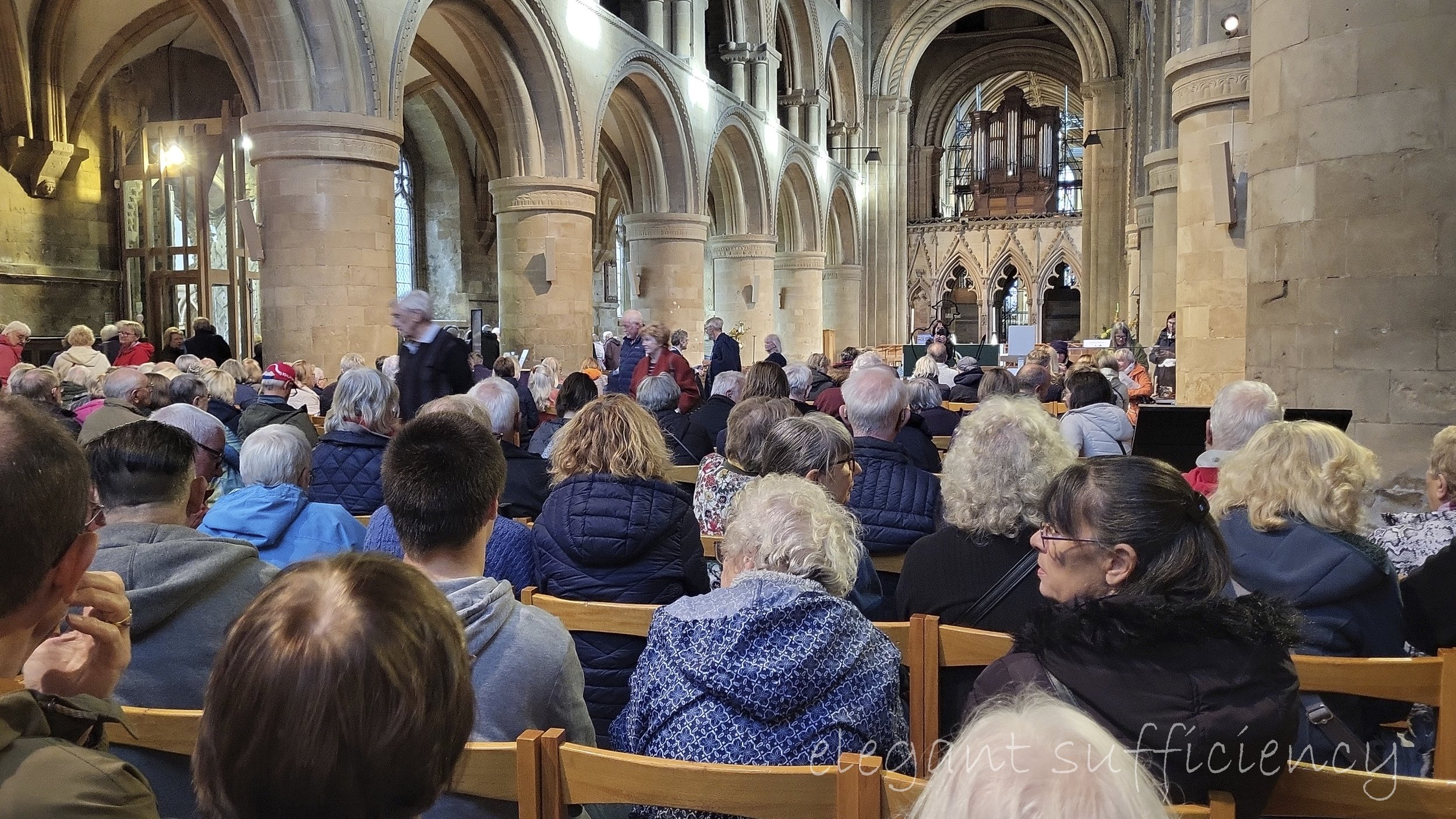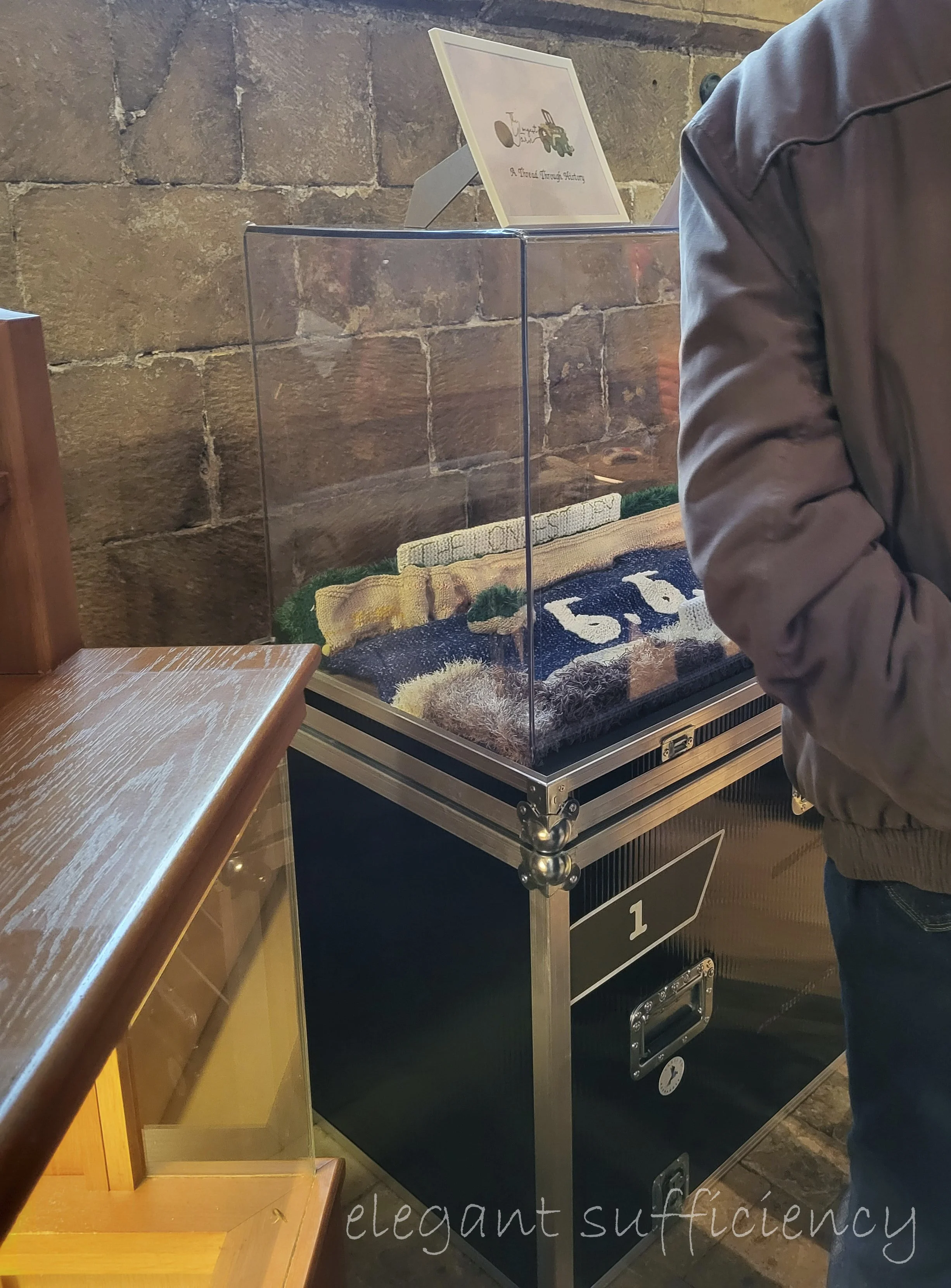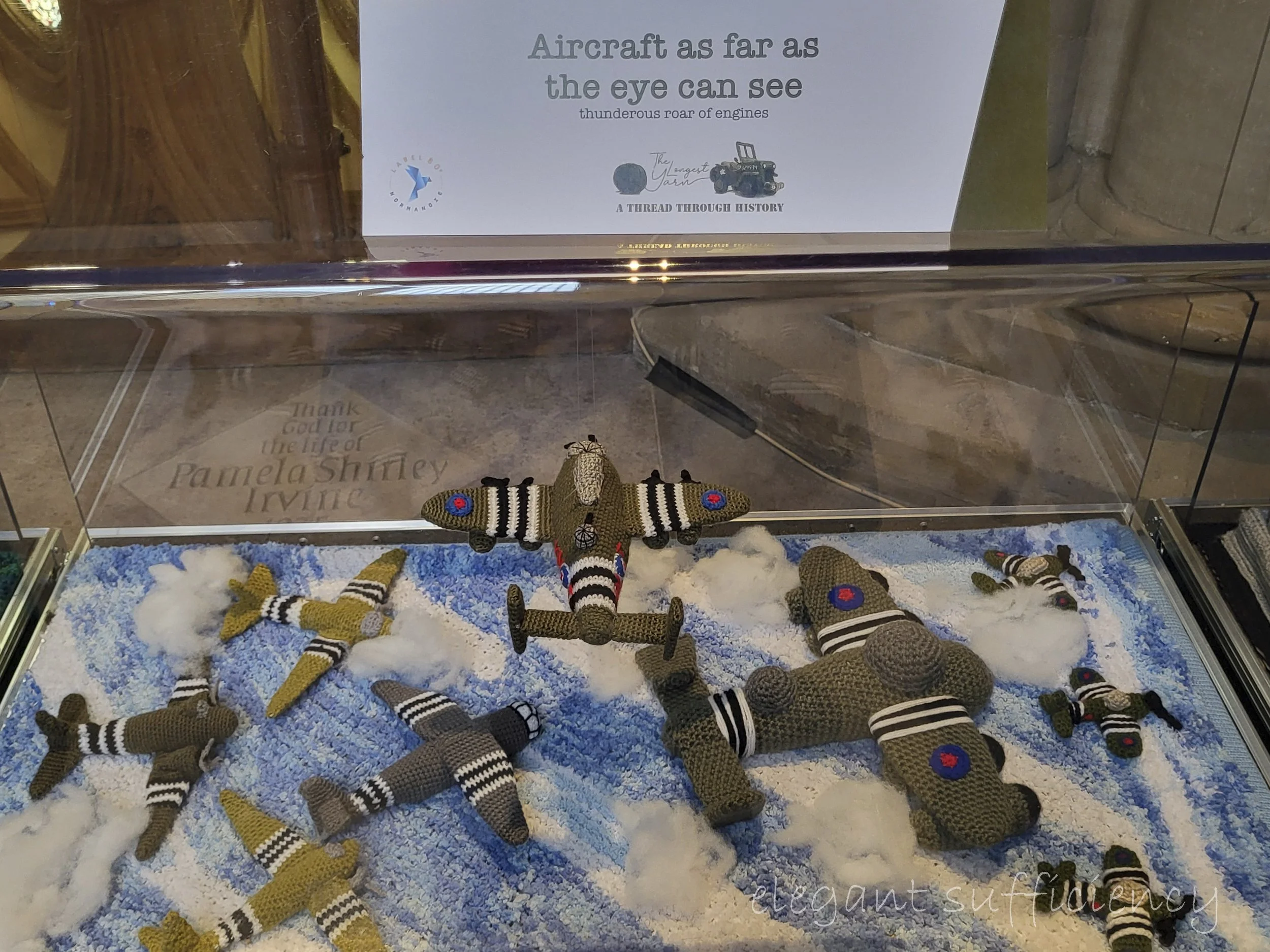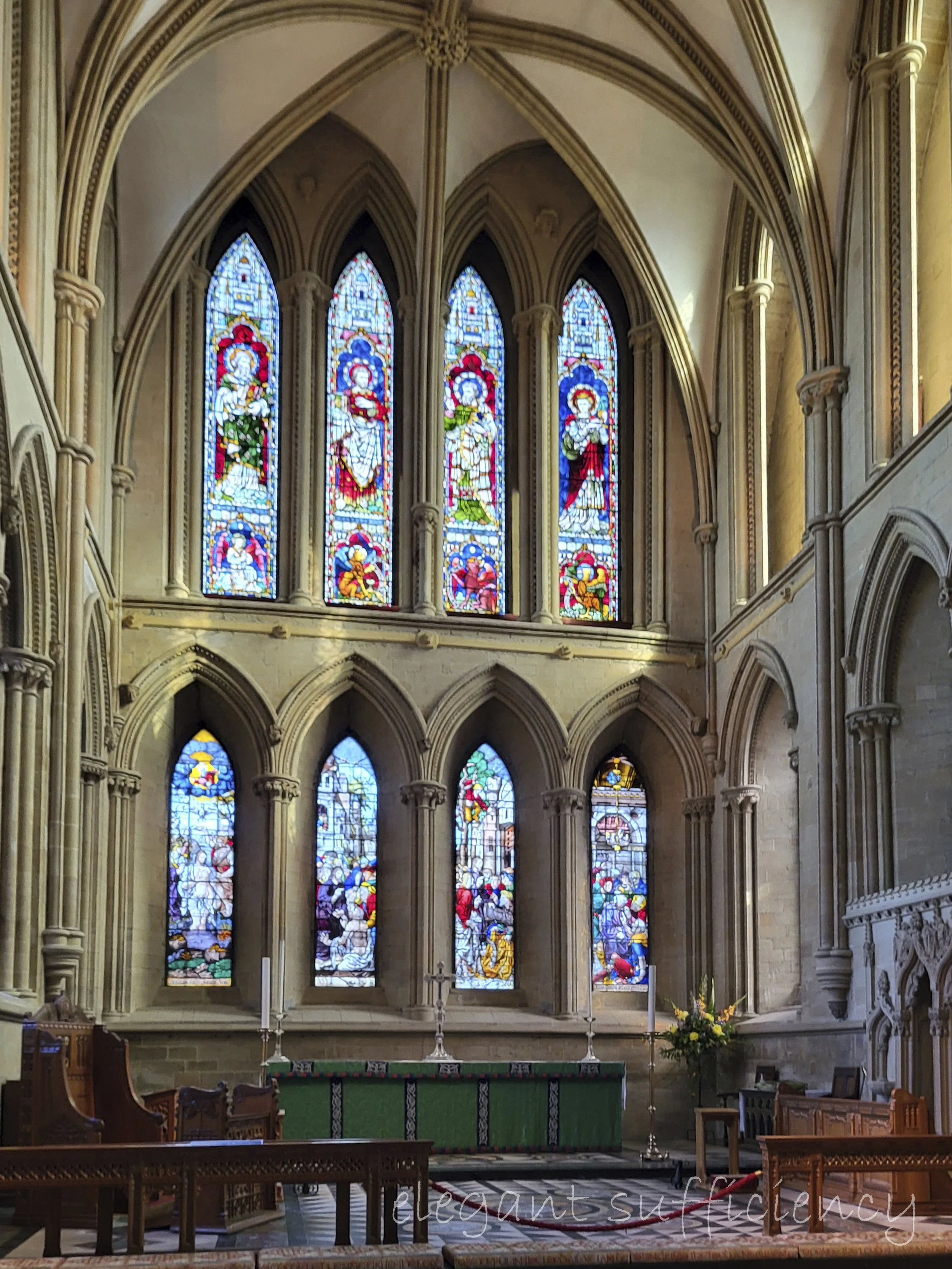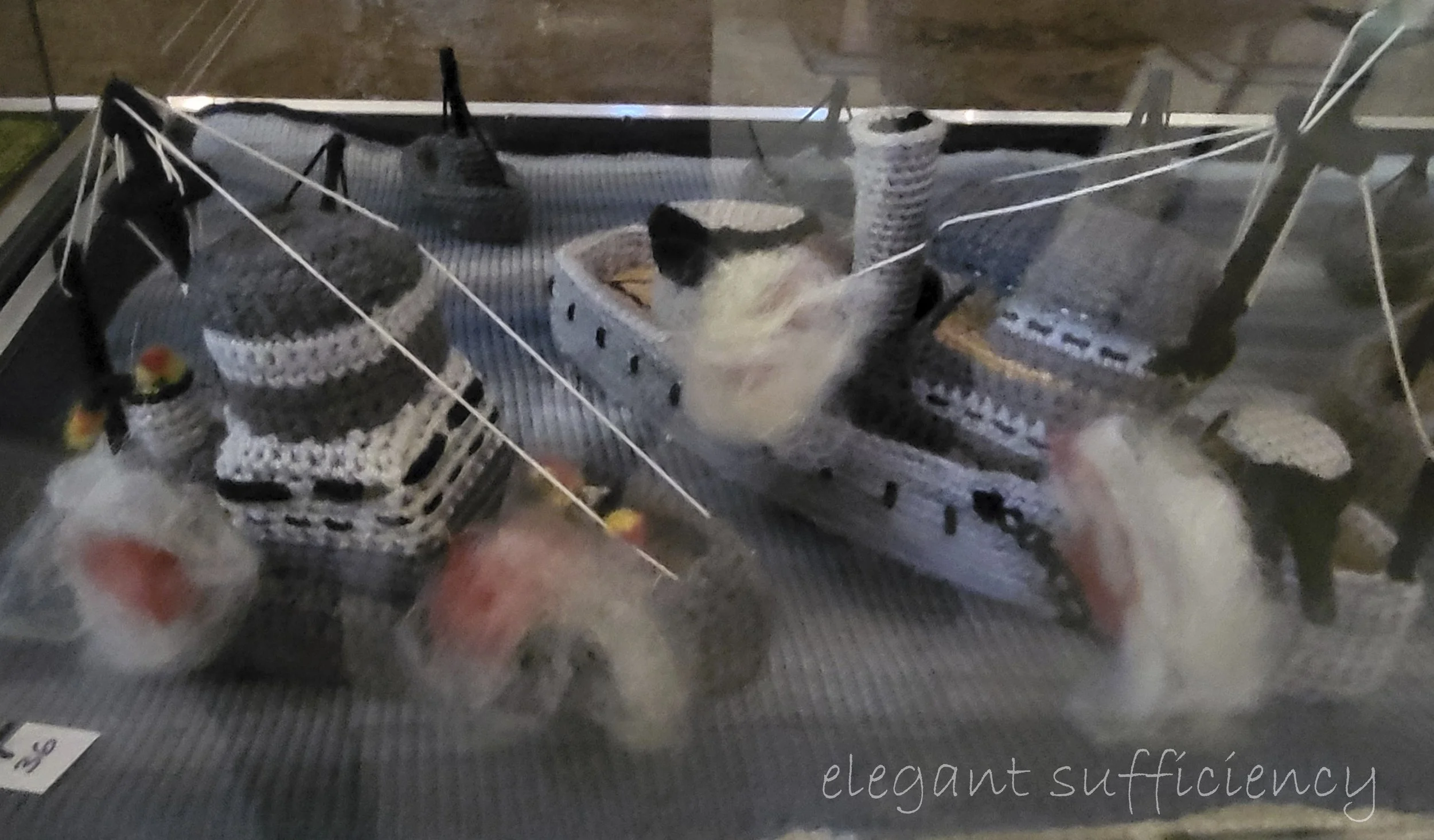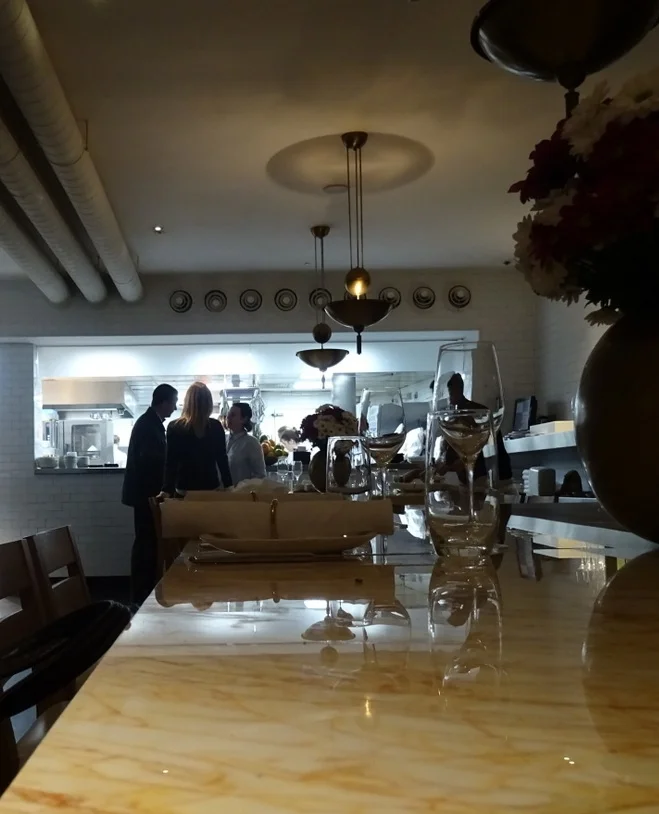The Longest Yarn
I knew I’d be in Southwell, Nottinghamshire this weekend but had done nothing as far as researching the area or what might be of interest to visit whilst here. My focus would be the Southwell Ploughing Match and Show and beyond that, I doubted that I’d have the time - or energy - for much else. But my colleague - Jill with a J rather than a G - had said she’d be interested to visit Southwell Minster, especially since the exhibition of The Longest Yarn would still be in place and hopefully, I could arrive early enough on Friday afternoon to go and see it.
I could, and I did.
Southwell (pronounced Suh-thell - or is it?) is an interesting place and when I mentioned I was headed there, aroused curiosity amongst friends and family. It’s a fairly small market town and yet the Minster holds Cathedral status and as a result, the name pops up on quiz shows from time to time.
Anyway, Jill and I headed to the town on Friday afternoon in the hope of catching the exhibition on the last afternoon it was showing here. I had read of long queues, but thought that perhaps if we timed our arrival for mid to late afternoon on Friday, we could be in luck and avoid the crowds.
Hah! It took us a half hour or more to find somewhere to park the car, for everywhere was full. Thankfully, we were lucky when we returned to the Minster car park just as someone was leaving and snagged their space. There didn’t appear to be many people waiting to go in…
But as we arrived at the welcome desk, we were told the queue was indoors and was seated, because it might be around an hour and a half before we’d get to see the exhibits, Oooer. We’d come so far though, had no further plans for the afternoon and thought we might as well sit here and have “our meeting” whilst we waited. Jill kindly did a coffee run and returned with Millionaire’s Shortbread as well, so the hour and a half passed pretty quickly! One by one, each row was invited to join the line of people slowly making their way around the perimeter of the church, the volunteer stewards doing a remarkable job in keeping everything running smoothly.
Sometime around 4pm, our turn came and we headed for exhibit #1 of 80. Each one was displayed beneath a glass/perspex cover and it wasn’t long before I realised my main challenge would be the reflections. But photos would be a must. The story told in these eighty exhibits was one that I knew I’d need to return to because there was no way I’d be able to notice all the small details here, on this walk-through. Each perspex display case was mounted on the top of its travelling case, for this exhibition will travel the length and breadth of this country before going over to the USA too.
I don’t have eighty photographs to share, since not only did I not snap every one of those stories but not all of my photos are of good enough quality to post here, sadly. However, I’ll try to give a flavour of what we saw, as much for my own memory keeping as anything else.
#1 was a knitted and crocheted date, setting the scene on the background of a shoreline, with “The Longest Day” in English and in French: a familiar name given to the 6th June, 1944, the date of the Normandy Landings, also known as D-day. The title of the exhibition - The Longest Yarn - is a clever play on words, for every one of these scenes is created using yarn of some kind, either knitted or crocheted. It really is quite remarkable.
Above each case was a title card, with a few details of the story depicted below. #2 was about the BBC announcements made in French to homes in France.
Of course, we wanted to read the details on the card and then relate them to what we could see in the case below. This took time and so progress was slow. The card above this scene entitled “Broken Roses” tells about Rommel in the Rose Garden of the Chateau, with a pair of shoes under his arm, bought for his wife’s birthday present. He’s making the decision to go, even though his adjutant is warning him of bad weather.
Such detail! Not only in the story, but in the exhibit itself. Whoever knitted this small scene included a neatly drawn map in the adjutant’s hand as well as all of those tiny details of his uniform.
No wonder we all wanted to savour every little detail before moving on. No wonder there was a long wait!
There was another map showing the likelihood of bad weather coming in. This was the story of Maureen Flavin, the first person to realise the depression on the chart whilst checking the readings in her weather station in remote Blacksod in Ireland. It was her 21st birthday that day and she lived to be 100. I loved reading such personal details which made the individual contributions all the more apparent. Just one day, when an incredible number of people each made a contribution to the eventual outcome that changed history.
Some of the scenes were of enormous activity, like this loading of tanks onto a ship in Gosport.
Others were small vignettes; scenes from stories told by those present at the time. Here, “a pretty girl bravely distracts the German sentries whilst two airmen are hidden in the haycart”. A little light relief, then, in a scene that might have come from an episode of ‘Allo ‘Allo!
A few exhibits later and there’s a scene of distraction dummy parachute drops, this one entitled “Rupert and the Clickers”
I had to look up the relevance of the “clicker”.
Every so often, the light was good enough to capture the incredible detail in each of these figures. These were two pathfinders checking each others parachutes. They were the first to go that day.
When we began our progress around the exhibition, one of the stewards said we should remember to turn back and look at the wall of the transept when we reached it. He didn’t say why, but…
We were so glad we did! This is the Battle of Britain lace panel
Simply breathtaking.
Onward, then. We were about a quarter of the way round now, still astonished by the level of detail and the immense skill involved in creating this incredible exhibition. For every one of the cases showing tiny personal details, there was another, telling the wider story.
And yes, small touches of humour like this parachutist who landed in a greenhouse. Every one of these was referenced with the name and place - this one in Sainte Mere Eglise.
Half way around and we reached the altar, realising that we’d seen very little of the Minster itself. A small sign told of the work of Robert “Mousey” Thompson, whose work is to be found in the Minster, including the altar rails. But we had no time to look for his signature mouse…we need to come again!
When we came across a group of figures such as this one, it really emphasised the way each one had been individually created and not just made to a blueprint. That, I felt, was one of the charms of the exhibits here.
Here, we see the story of Operation Neptune, where ships opened fire and 8000 people on the Cherbourg peninsula lost their lives.
This was followed by a scene from Omaha Beach where Cpl Woodson’s bravery saved 100s of lives.
The Utah Beach landings, of which this is just one small group.
Then there was dispatch rider Donald Sheppard…
and Piper Millin…
“whose kilt came up like a tutu” as he jumped from his landing craft. His kilt was made from his favourite sweater. I was charmed by every one of these vignettes, each one based on the true story of a real person.
We were still going strong, though had an eye on our car park time, for all of this was taking way longer than we’d anticipated. But look here, there are soldiers climbing cliffs at Point du Hoc and we learn they’re using London Fire Brigade ladders because they’re the longest ones available. So many fascinating details.
The scene of Gold Beach depicts Stanley Hollis, awarded the only Victoria Cross of D Day.
He’s yet another of those people of whom I had not heard, but whose story I’ve learned as a result of this exhibition. Though we were only just about three quarters of the way through the cases, our progress was slowing down and the crowds viewing the last twenty or so cases were four or five deep. We glanced at our watches and agreed, we had seen such a wealth of treasures already, that another twenty stories would not necessarily enrich our experience greatly. Rather than risk a car park penalty and a late arrival for the meeting with our group, we’d quit whilst we were ahead.
Spotting a gap in front of case #80, I stepped forward and took my photograph.
I felt it was a poignant and somewhat apt finale to a wonderful exhibition.









